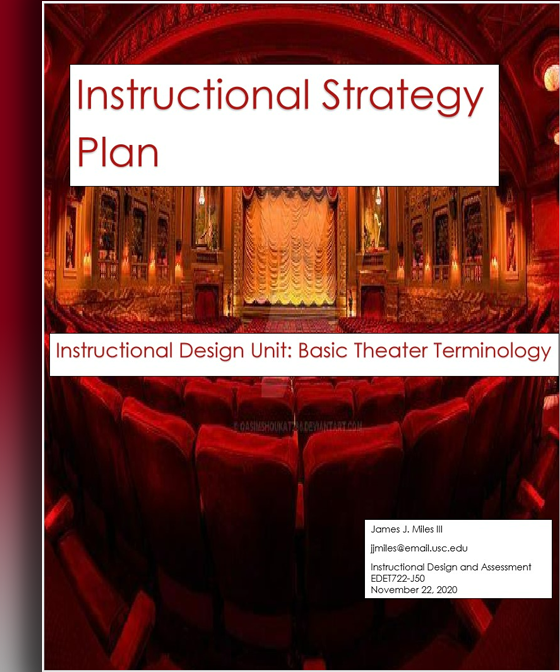AECT STANDARD 3
Instructional Strategy PlanContext & conditions: My Instructional Strategy Plan for my PowerPoint unit for Dr. Moore's Instructional Design and Assessment Class was submitted in November 2020 as a part of the M.Ed program at the University of South Carolina.
Scope: This document demonstrates the ability to strategize and evaluate an entire instructional design from beginning to end. Role: I served as the loan designer on this project. Instructional Design:The Morrison, Ross, And Kemp Model was used throughout this process. Specifically in the assessment phase. In this case, a goal analysis was created. Again, following the Morrison, Ross, and Kemp model. Morrison et al. (2013) referenced that a goal analysis is used when a complete needs assessment isn't possible. In this case, the goal analysis seemed to make more sense. Related performance indicator(s):A plan of this scale demonstrates evaluation and managing effective learning environments; this is an indicator of AECT 3 competency. Reflection:Creating this document showed me the detail needed to create a solid instructional design. Creating something from nothing from the ground up is something a designer needs to do. As this document leads to a design that I am still using, I believe it serves as a successful example of creating a design from a needs assessment. |
Click the document above to view |
Game AnalysisContext & conditions:The game analysis was created for Dr. Tang's Design and Evaluation of Games and Simulations in September of 2021 as a part of the M.Ed program at the University of South Carolina.
Scope: This artifact allowed me to find the educational content and learning elements within a game created with no educational value. Role: I served as the loan designer on this project. Instructional Design:I followed Morrison, Ross, and Kemp's (2013) Formative evaluation to discover the learning outcomes that an off-the-shelf video game might provide. Specifically, Morrison et al.'s ideas are that formative evaluation is the "quality control of the development process" (2013, p. 254). Related performance indicator(s):This artifact meets AECT 3 competencies by demonstrating management show the ability to manage technology infrastructure to improve learning and performance by understanding different technology implementation. Reflection: Going deep into a game and playing it for hours to find the various educational tools presented was a new type of analysis. Further, creating a video to highlight this allowed me to add a unique skill set. I created this through a combination of recording my game play on Twitch, creating graphics in Canva, recording myself in Zoom, and editing it all together in Adobe Premiere |
|
Internship Final ReportContext & conditions:The final report of Dr. Grant's Internship in Educational Technology is a digital walkthrough of the learning design created for William Paterson University's Instruction Research Technology department. It was created as a part of the M.Ed program at the University of South Carolina.
Scope:The design is being deployed as a Faculty Development Course. I served as designer on this project with Dr. Gamin Bartle, Director of William Paterson University IRT department, as the SME. Role: I served as the designer on this project. With Dr. Bartle serving as SME and editor of the content. Instructional Design: As the need for the course was determined by Dr. Bartle, I felt as though the ADDIE model made more sense. This course would take a very systematic approach (Morrison et al. 2013) to its development because, as a client. Dr. Bartle had already determined the need for this design. Related performance indicator(s):By the nature of this design creating engaging equitability and inclusive online courses, the artifact demonstrates competency in AECT Standard 3 diversity of learners. Specifically, the ability to foster a learning community that empowers learners (p. 10). Reflection: Working on this project gave me a real feel for being an instructional designer working for a subject matter expert. Working with Dr. Bartle, I couldn't have asked for a better first experience in this role. For a fuller account of this artifact, please read my complete internship reflection here. |
|

